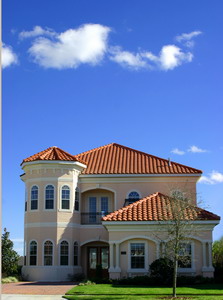 |

Steel roofing is the leading form of metal roofing, and is now the number one choice among American home-owners when building or replacing a roof. Even the government has recognized its benefits, and is offering tax deductions in the thousands to those deciding to make the wise decision of steel roof installation. Apart from being the most durable and long lasting form of roofing material available, it is also energy efficient, 100 percent recyclable, and has low life cycle costs (next to nothing). Its light weight allows for a better suited floor plan, and its design flexibility provides a bigger scope of steel roof shapes and styles. Available in a range of colors, panel designs, and corrugated steel roofing sheets, the steel roof can accommodate almost any architectural or artistic style, at both a lower cost and longer guarantee than any other form of roofing. With all these attractive benefits and more, steel roofing is our most recommended roofing option.
 |  |  |
Steel roofing is a highly versatile material that can create unique visual effects, and myriad roof shapes and designs. The following are a few of the most popular steel roof designs:
Concave or Convex Steel Roof – steel roofing can be specially curved to create a concave or convex shape for old gothic, cranked, or sandwich panel style steel roofs.
Pitched Steel Roof – this relates to any steel roof that is made up of sloped sides. Many pitched steel roofs are made up of either standing seam steel roofing panels, or corrugated steel roofing.
Skillion Steel Roof – this refers to a continuous regular or corrugated steel roofing piece covering one section of your roof.
Whatever design or style you are aiming to achieve, Roof 101 can help you with steel roof installation, repair, replacement, and all other steel roofing needs, for minimum money and maximum efficiency.
A do it yourself metal roof project is far from easy. Aside from requiring much hard to obtain and hard to use equipment, the process itself is both complicated and dangerous. There are also many situations in which more than one person is required. For these reasons, we recommend that you do not proceed with a metal roof DIY project if you are incapable. Alternatively, contact a Roof 101 professional for assistance.

|